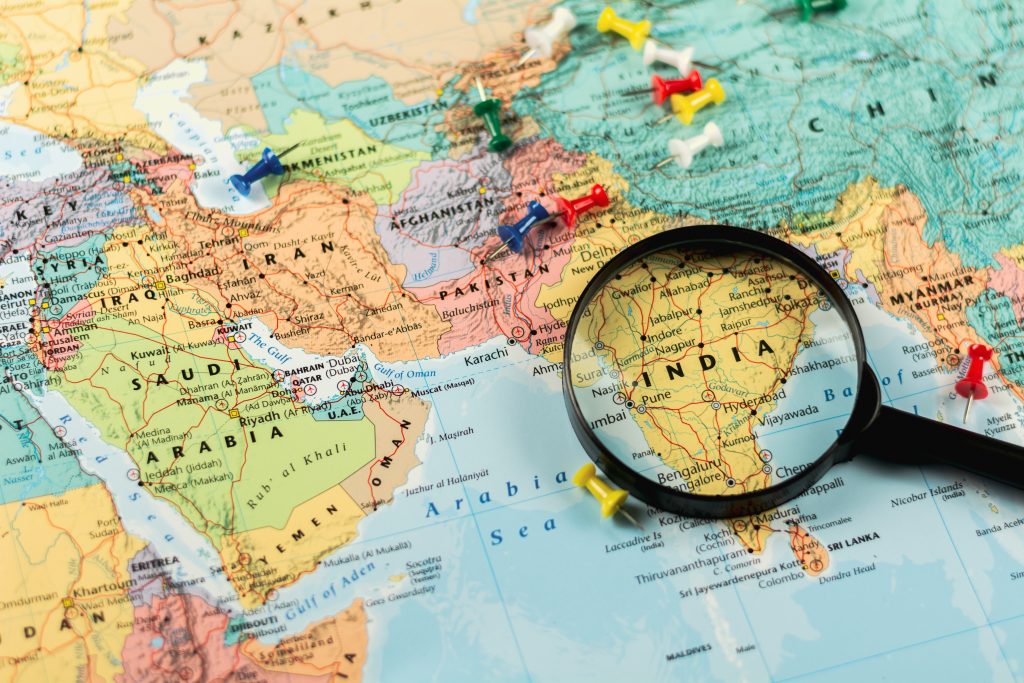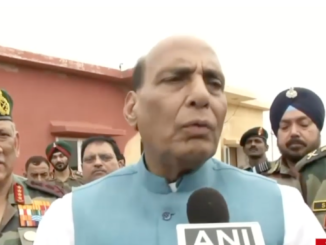
Vernon K. Mclellan states that “Diplomacy is cutting the other fellow’s throat without using a knife”; Indian diplomacy exemplifies how nations employ this instrument to attain their objectives. Due to the strong diplomatic lobbying and media portrayal by successive Indian administrations, Pakistan has always been blamed for the inimical relations between the two neighboring states. Even after the arrest of Kulbhushan Jadhav from Baluchistan, the violation of Pakistani airspace and the failed attempt by the Indian Air Force to attack Pakistan in 2019, India remains the favourite child from South Asia.
As per the tenets of Game Theory, the subject of dispute around which the game is constructed between India and Pakistan, is Kashmir. The nuclear powers are playing a finite game in Kashmir, in which both sides have long-term goals, and neither of the two states is willing to back down. However, in this power struggle, India has continued to accuse Pakistan of strained relations between the two countries, claiming that the latter interferes in its internal affairs and sponsors terrorism. Pakistan, on the other hand, asserts that the people of Kashmir have the right to decide their own fate under United Nations Security Council Resolution (UNSCR) 47.
India consistently blames Pakistan for disputes, but when we examine India’s ties with its neighbors, it becomes clear that the issue rests in India’s foreign policy toward its neighbors, and not with Pakistan. India’s expansionist desires and insistence on acting as a big brother towards weaker and comparatively smaller South Asian states fuels regional conflicts. India shares a border with eight countries and has both major and minor conflicts with six of them, the Maldives and Bhutan being exceptions. It is critical to examine the conflicts between India and its neighbours in order to establish that Pakistan alone should not bear the brunt of strained relations.
In game theory, a game is considered to be stable if a finite player acts against another finite player, or an infinite player plays against an infinite player. In most cases in South Asia, conflicts are of infinite nature; for them to construct a game, three things are required, i.e., a set of players, a set of strategies for each player, and their respective payoffs. The following section explains how India has been engaging in conflicts and disputes with its neighbours over the issues of territory, water, and internal interference.
China
Sino-Indian relations have been the key driver of economic activities in the South Asian region but in pursuit of being the regional hegemon, both states have been periodically engaged in conflict with each other, the main one being the Sino-Indian border dispute over the Ladakh region. The border or the Line of Actual Control (LAC) is not demarcated, which often results in transgression. The first political pitfall that the Indian administration had to face was the defeat in 1962 in the Sino-Indian war over the border issue. More than fifty years later, the conflict continues. Matters escalated on 15 June 2020, and both sides held each other responsible for the tense situation. With India’s decision of 2019 in Jammu and Kashmir to end the region’s traditional autonomy and create the Union Territory of Ladakh, China saw the recent construction of a road in the area as a threat to the status quo and its strategic position in the region.
The bone of contention between the two countries is the border dispute, but there are other issues as well. With the countries’ naval build-ups and deployments in the Indian Ocean Region (IOR) and Western Pacific, the Sino-Indian rivalry has taken on a maritime dimension. According to Ken Booth, “Warships can be important influences on a country’s foreign policy simply ‘because they are there’. To the extent that a government perceives itself to be vulnerable in the naval context or identifies hostile naval intentions and capabilities on the part of the adversaries, warships can be an important factor in defining the threat.” Sustainability, which is linked to the concept of geographic reach, is an important determinant of naval force projection. It refers to the ability to keep naval forces on the station under a variety of working conditions, including adversary vicinity, and demanding operational environments. The East and South China Seas, the Yellow Sea, and the Taiwan Strait, where Beijing continues to grapple with unresolved maritime disputes with its neighbours, are among the areas where Chinese naval armament calls for active offshore defense. The People’s Liberation Navy Army now has a new mission, which is to protect China’s foreign interests in the face of growing global interests. On the other hand, India’s naval development appears to be focused on securing the interests in the Indian Ocean’s immediate vicinity. Concerns in New Delhi about Beijing’s reach in the Indian Ocean revolve around the latter’s increasingly powerful blue-water naval weapons, particularly submarines, and access to regional ports, particularly with Pakistan. Despite its limited ability to deploy naval forces into those areas, Beijing will remain cautious as New Delhi penetrates the immediate waters of the western Pacific. While a war between China and India is still a long way off, mutual rivalry at sea, fuelled by unresolved political issues on land, will continue to be a feature of their blue-water naval missions. Although Sino-Indian relations rely on economic ties, conflicts remain and are escalating, with the primary game centred on border disputes, followed by others.
Bangladesh
In 1971, when East Pakistan was separated from Pakistan and became Bangladesh, India was the first country to recognise the Mujib Ur Rehman government and supported the Bengali-speaking people in their fight against the ruling elite of West Pakistan. However, when it comes to disputes, India has multiple conflicts with Bangladesh over territory, and particularly on water. Both states are seemingly indulged in a game over water disputes because the countries share 54 common rivers; they have signed the Ganga Water Treaty, which was established in 1996, and engage in a bilateral Joint Rivers Commission, set up in 1972, to maintain liaison between the two countries in order to maximise benefits from common river systems.[i]
However, two major water bodies are under dispute, one on the Farakka Barrage and the other on the Teesta River. Although the sharing of Ganga waters was agreed upon during the 1996 Ganga Water Treaty, there are still disagreements over the Indian government’s construction and operation of the Farakka Barrage. Bangladesh claims that it does not get a fair share of the water during the dry season and that India releases an excessive amount of water during the monsoons, causing floods in the country. The Rangpur region in Bangladesh receives irrigation from the Teesta River, and in 2011, an agreement was reached in which India received 42.5% of the water, while Bangladesh received 37.5%, and 20% of the water would flow unhindered. The Teesta River, however, remains a major source of contention between the two states even after the aforementioned terms of distribution.
Apart from water disputes, India and Bangladesh are at odds over a 4,096-kmland border. The border issue remains unresolved due to the non-demarcation of 6.5 km along the Comilla-Tripura route. India is hesitant to resolve the dispute because the land will likely be given to Bangladesh after the demarcation. Despite the media’s portrayal of Bangladesh and India as having the most cordial relationship, there are disagreements between the two countries and, both sides have a great deal riding on the outcome.
Sri Lanka
India is Sri Lanka’s only neighbour that is connected by a maritime border and the two have strong ties. Much has been written about India’s involvement in Sri Lanka’s civil war, but the most recent point of contention between the two countries is over strategic issues and the problem of illegal fishing.
The ‘Sri Lanka-China Axis’ is the real threat that India is currently facing. Despite having economic ties with India, Sri Lanka has shifted its focus to China in the last few decades. Sri Lanka and China signed a $1 billion deal in 2007 to build a deep-water port in Hambantota. Later that year, the Sri Lankan government hired a Chinese firm to build and operate Colombo’s South Container Terminal. In 2016, China began a 1.4-billion-dollar project in Colombo Port City as part of Beijing’s ambitious plan to build a modern-day Silk Road across Asia. To counter China’s economic build-up in Sri Lanka, India intends to construct Trincomalee Port, which will serve as an Indian counterweight to Chinese developments at Hambantota Port.
The fishing dispute between the two neighbouring states is a constant source of concern. Sri Lanka has expressed concern about illegal fishing by Indian fishermen in its territorial waters across the Palk Strait and has arrested Indian fishermen who have violated their International Maritime Boundary Line (IMBL). Kachchative Island, which India ceded to Sri Lanka in 1976 as part of the Kachachativ Island pact, is also a source of potential conflict. The state of Tamil Nadu claims that the island is part of Indian territory, with the additional claim that Tamil fishermen have the right to fish in the aforesaid area.
Nepal
Nepal and India have generally had a cordial relationship throughout history, owing to the fact that the two countries share an open border of approximately 1770 kilometres. They have finalised maps covering 98 percent of the boundary, but the game that has been played by both states is in the western Nepal region over Lipulekh pass, Kalapani, and Limpiyadhura.

The situation worsened when India’s Home Ministry released a new edition of its political map, which included the disputed Kalapani region in the Himalayas as part of India. The Kalapani area is strategically important because it serves as a tri-junction between China, India, and Nepal. In addition, India’s defence minister virtually inaugurated a new 80-kilometre-long road in the Himalayas at the Lipulekh pass on 8th May 2020. The Nepalese government retaliated by accusing India of altering the status quo without consulting its diplomats. The administration of Prime Minister Khadga Oli issued a new political map of Nepal that included Kalapani, Lipulekh, and Limpiyadhura under Nepalese territory. As a result, the situation escalated, resulting in a standoff between soldiers on both sides of the border. A noteworthy question is that why Nepal, a landlocked country that relies heavily on Indian imports, took such a hard-line approach. In recent years, China has included Nepal in its Belt and Road Initiative (BRI), filling the gap with investments, aid, and loans. As of now, India is not the sole exporter of goods to Nepal, and the Lipulekh pass is extremely important to India because it was used against China in 1962; after the humiliating defeat, the latter is more concerned about the Chinese intrusion via that route.
Conclusion
Indian hostility against its neighbours speaks volumes about the state’s aggressive actions and expansionist objectives. Pursuing a policy of strong diplomatic endeavours and lobbying in regional and international institutions allows them to behave in accordance with their national interests in the region, and with impunity. Seeking to be the dominant power in South Asia, India has taken steps that have increased animosities with other regional states, and not only Pakistan. The territorial issues with China have increased in frequency in the past few years, while the maritime disputes with Sri Lanka have a long history along with the ethnicity issues. Bangladesh, remains mired in territorial and water conflicts, while formerly friendly relations with Nepal are now becoming strained due to the Modi government’s expansionist objectives.
The blame for the strained relationship between the two bordering states does not lie only with Pakistan. The onus of enmity and antagonism falls squarely on Indian shoulders, and the burden will not be lifted until the BJP leadership reconsiders its foreign policy decisions and expansionist ambitions in South Asia.
![]()





Very well articulated!
i appriciate your work.